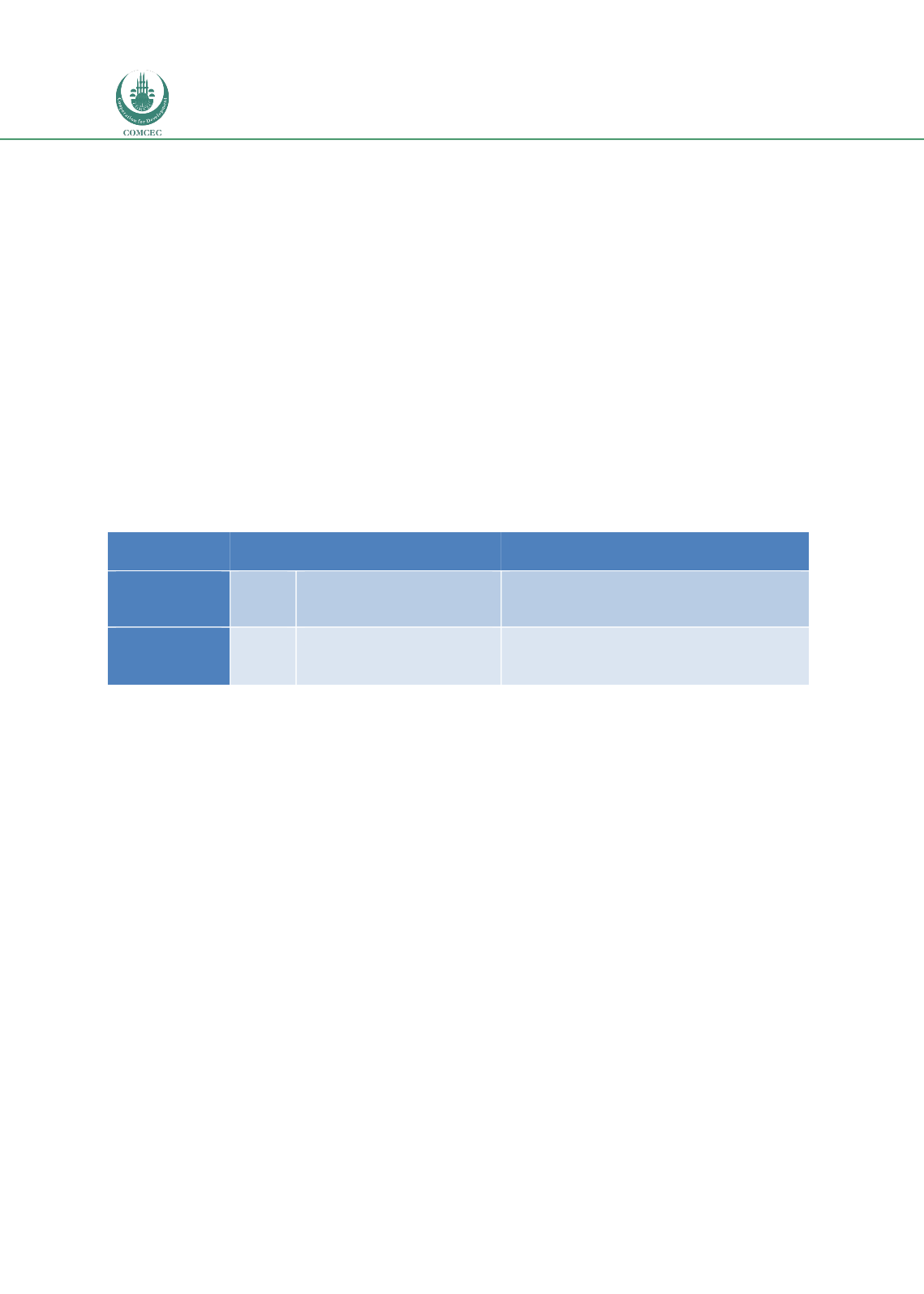

Reducing Postharvest Losses
In the OIC Member Countries
140
farm were little margin as been accrued or at the consumer end where margins are much
greater.
In general, the losses reported in OIC Member Countries in the literature review and case/field
studies were large and significant. Comparisons are difficult because comparison with global
figures are complex and the figures are estimates. In all cases the economic losses are
significant and hence consumer and actors in the value chains and the environment will
benefit if these monetary losses could be reduced.
Cereals
The quality and nutrition losses for cereals n OIC Member Countries in Sub-Saharan Africa and
North Africa, West and Central Asia are reported in
Table .The losses relate to nutritional
losses specifically calories. The estimates imply that there would be better access to calories if
these losses could be reduced. This implies that the consumer and actors in the value chains
and the environment will benefit if these losses could be reduced.
Table 72: Quality and nutrition losses for cereals reported in the literature and case/field
study
Postharvest
loss
Global Literature review
Case/Field study
Sub-Saharan
Africa
Annual caloric requirement
of 48 million people (World
Bank, NRI, FAO, 2011).
North
Africa,
West
and
Central Asia
Annual caloric requirements of at least 15
million people (at 2,500 kcal per person per
day) (Egypt)
Where: - = no data
Root and Tuber Crops
The quality and nutrition losses for root and tuber crops were only reported for the OIC
Member Country Uganda and biofortified root and tuber crops containing provitamin A such
as orange sweet potato and yellow cassava. However, these losses may apply to any OIC
Member Country where such biofortified crops are consumed. Although not quantified as
physical or economic loss terms, 70% of the pro-vitamin A of sweet potato was lost after 2-13
months of storage at ambient conditions. In areas where vitamin A deficiency is prevalent
this would have a significant effect on health unless ways to delay the loss are employed; for
example, lowering the temperature, removal of oxygen and light.
Oilseeds and Pulses
The quality and nutrition losses for oilseeds and pulses in were only reported for the OIC
Member Country Senegal and this was from the case study on groundnuts. The loss relates to
aflatoxin in groundnuts and up to 85% of the crop can be contaminated. It is usually difficult
to visually determine if the nuts are contaminated. As well as an impact on health this may
also lead to economic losses though loss of export markets. Reducing aflatoxin contamination
will benefit consumer health, increased income of actors in the value chains though more
confidence in the market and improvement to the environment.
















